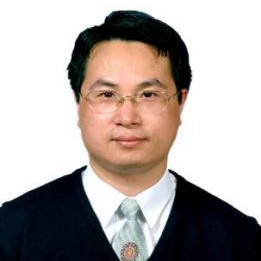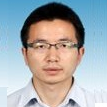Assessment of Land Use/Cover Change Using Geospatial Technology
A special issue of Land (ISSN 2073-445X). This special issue belongs to the section "Land – Observation and Monitoring".
Deadline for manuscript submissions: closed (30 April 2024) | Viewed by 5534
Special Issue Editors
Interests: environmental remote sensing; land resource mapping; land degradation; multi-biome biomass; natural hazard risk zoning and machine learning
Special Issues, Collections and Topics in MDPI journals
Interests: land use/cover; geomatics; littoral environment; multi-agent modeling
Interests: land use/cover; geomatics; geo-disaster risk assessment; environment; artificial intelligence
Special Issues, Collections and Topics in MDPI journals
Special Issue Information
Dear Colleagues,
(1) Introduction, including scientific background and highlighting the importance of this research area.
Land use/cover change (LUCC) has been a hot topic in global environmental research since the 1990s, when it was proposed as a core project of IGBP and IHDP. Geospatial technology, including remote sensing, GIS, GPS/Beidou, and processing systems, has been playing an important role in land use/cover (LUC) mapping, LUC change detection and dynamic monitoring and assessment. Especially with advancements in artificial intelligence, including machine learning and deep learning, geospatial technology is becoming an increasingly powerful tool, which can be used in different types and scales of LUC mapping, modeling, simulation and the prediction of future LUC patterns. Thus, it is necessary to provide a platform where scientists, who work in the fields of LUC, LUCC and LUCC modeling and prediction, can come together from across the world and communicate.
(2) Aim of the Special Issue and how the subject relates to the journal scope.
The goal of this Special Issue is to collect papers (original research articles and review papers) that provide give insights into LUC mapping, LUCC detection, modeling, simulation and prediction by geospatial technology, more concretely by remote sensing, GIS and artificial intelligence.
The subject of this Special Issue (SI) is focused on land use and land cover and their related research, and hence falls well within the scope of the journal Land.
(3) Suggested themes and article types for submissions.
This SI will welcome manuscripts that link the following themes:
- New approaches for land use/cover (LUC) mapping and land use/cover change (LUCC) detection;
- LUCC modeling, simulation and future LUC prediction;
- Land degradation monitoring and assessment;
- LUC-related machine learning and big data mining technique;
- Man–nature interaction analysis and modeling;
- Analysis of environmental impacts on urbanization and urban planning.
We look forward to receiving your original research articles and reviews.
Prof. Dr. Weicheng Wu
Dr. Brice Anselme
Dr. Yalan Liu
Dr. Qiulin Xiong
Guest Editors
Manuscript Submission Information
Manuscripts should be submitted online at www.mdpi.com by registering and logging in to this website. Once you are registered, click here to go to the submission form. Manuscripts can be submitted until the deadline. All submissions that pass pre-check are peer-reviewed. Accepted papers will be published continuously in the journal (as soon as accepted) and will be listed together on the special issue website. Research articles, review articles as well as short communications are invited. For planned papers, a title and short abstract (about 100 words) can be sent to the Editorial Office for announcement on this website.
Submitted manuscripts should not have been published previously, nor be under consideration for publication elsewhere (except conference proceedings papers). All manuscripts are thoroughly refereed through a single-blind peer-review process. A guide for authors and other relevant information for submission of manuscripts is available on the Instructions for Authors page. Land is an international peer-reviewed open access monthly journal published by MDPI.
Please visit the Instructions for Authors page before submitting a manuscript. The Article Processing Charge (APC) for publication in this open access journal is 2600 CHF (Swiss Francs). Submitted papers should be well formatted and use good English. Authors may use MDPI's English editing service prior to publication or during author revisions.
Keywords
- land use/cover (LUC)
- land use/cover change (LUCC)
- remote sensing and GIS
- modeling, simulation and prediction
- artificial intelligence and big data mining
- land degradation assessment
- man–nature interaction








